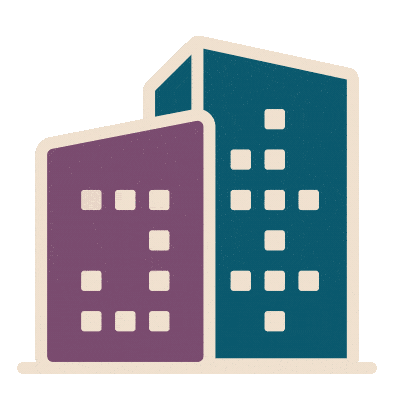Gathering Momentum: How the Pandemic Shifted the Conversation on Health and Well-being for Good
As the events of 2020 unfolded, individuals and organizations across the globe found themselves confronting levels of hardship and societal disruption at a scale that hadn’t been seen for generations. There was a moment at the beginning of the pandemic when it felt as if the entire world had ground to a halt. Our busy workplaces, teeming transit hubs, crowded streets and packed public venues fell silent – a surreal interlude that touched every aspect of our lives.
As a business leader, the onset of the COVID-19 pandemic was one of the scariest times of my career. My first thought was would I be able to take care of our people? The ongoing viability of the business required that we sustain our ecosystem and support our employees, both financially and emotionally, through this period of extreme uncertainty. Could we do it?
Like many organizations, IWBI experienced an unplanned and unwelcome operational hiatus.
For us, it was mercifully brief. With a greater understanding of the ways in which the virus was being transmitted came the growing acknowledgement of the leading role buildings, communities and organizations can play in supporting health and well-being – and IWBI’s role in mitigating the impact of the virus became clear.
Our team expanded in response to the dramatic rise in WELL registrations, which were suddenly averaging around a million square feet every day (and in December it was twice that – almost 60m square feet). With over 15,800 individuals having registered or achieved their WELL AP, we began registering new individuals for the exam at a rate that will enable us to surpass 20,000 WELL APs registered before the end of 2021.
With the help of our community we moved quickly to create a product that could meet the critical needs building owners and operators were facing in both buildings and HR policies. Leveraging our existing expertise and with additional feedback from the IWBI Taskforce on COVID-19 (nearly 600 members, 30+ countries), we found ways to respond to the pressing COVID-19 related needs of our customers while supporting prevention and preparedness, resilience and recovery in more robust ways.
One outcome was the launch of the WELL Health-Safety Rating. Drawing on a subset of features from WELL v2, we created an evidence-based, third-party verified rating for all new and existing buildings and space types that is focused on operational policies, maintenance protocols, emergency plans and stakeholder engagement strategies to help organizations get back to business during these pandemic times.
We have felt so inspired and gratified to be working directly on the solution for what was ailing all of us and have been astounded by the community’s willingness to help. What’s been even more encouraging is the interest not just in the WELL Health-Safety Rating but in how our buildings and interiors can more broadly benefit human health and well-being.
We only launched the rating in June, but registration is already approaching one billion square feet of real estate; more than 7,500 facilities, have enrolled in the program, including iconic buildings like Yankee Stadium, the Empire State Building and Royal Albert Hall in London, retail giants like Simon Malls, global financial service organizations like JPMorganChase, hotel leaders like Aimbridge Hospitality, and many more. Many of these companies are enrolling their entire organization in WELL offerings, enabling them to extend the benefits of WELL to every member of their workforce.
Currently, more than 1.5 billion square feet of real estate is participating in WELL offerings. It took us about 66 months to reach 600 million square feet enrolled for WELL Certification; it took less than six months for WELL Health-Safety Rating to reach the same milestone.
The starkest shift, though, has been in the value organizations are now placing on the health and well-being of their staff, customers and other stakeholders. Prior to pandemic, we were often grilled on the ROI of a WELL-Certified building – an exchange we welcomed as it gave us the opportunity to share amazing stories about customers who have experienced reduced sick days, improved recruitment and retention and enhanced performance.
Today, we rarely get that question because as we navigate the pandemic, the ROI of investing in human and social capital is suddenly so obvious. Organizations that were under-prepared suffered. Those that didn’t quickly adapt their processes to support the health and safety of their employees saw massive impacts on the overall productivity and profitability of their businesses, not to mention the potential for lasting brand damage.
The continuing fallout from the pandemic means there’s also a growing expectation that employers have a responsibility to safeguard not only the physical, but also the mental well-being of their employees. It’s something that needs to be seen as a critical short and long-term investment, especially as it’s likely that employers will expend many more dollars on the treatment of mental health illness than on COVID-19 itself this year.
In 2020, we’ve seen definitive proof that prioritizing well-being isn’t solely an act of altruism – it’s not just about doing well by your people because it’s the right thing to do – it’s about doing well by your business and the bottom line too.
The virus is going to recede at some point. What will remain, however, is an increased demand for more mindful organizations and an affirmation of the need for people first places: it’s what we believe is driving the momentum behind WELL adoption today.
We’re excited and humbled to be a part of this growing movement. The pandemic has turned our world on its head, brutally shortening over two million lives to date and impacting the health outcomes of millions more. But it’s also offered us the opportunity to reboot our assumptions and to work towards a better future for everyone, everywhere.







